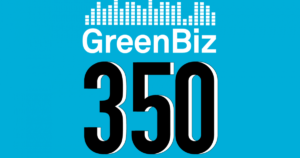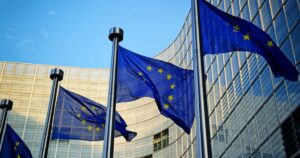
This article is sponsored by Sphera.
Do no significant harm: This principle underlies the EU’s sustainable finance framework. To the dismay of those who agonize over acronyms, the principle is so deeply embedded in sustainable finance that its acronym, DNSH, is widely used. The framework includes the Sustainable Finance Disclosure Regulation (SFDR), and this piece provides an overview of the SFDR that explains how it fits into the EU’s overall approach to sustainable finance.
In addition to the SFDR, which applies to financial market participants (FMPs) and financial advisers (FAs), the EU’s sustainable finance framework includes the Corporate Sustainability Reporting Directive (CSRD), which applies to large and listed companies.
Recent months have seen much activity around these frameworks, including the release of proposed European Sustainability Reporting Standards and rules under the CSRD. SFDR-related developments include the July publication of Regulatory Technical Standards (RTS). As key components of the EU’s sustainable finance framework, the SFDR and CSRD uphold the DNSH principle in order to prevent a singular focus on a particular environmental factor at the expense of other environmental considerations.
The European Green Deal: A foundation for a sustainable economy
The SFDR emerged from the European Green Deal, which encompasses European Commission policy and legislative proposals designed to make the EU carbon-neutral by 2050. It lays the roadmap for a sustainable economy and positions sustainable objectives squarely at the core of EU policy.
In creating this roadmap, European legislators agreed that financial market participants and financial advisers must participate in building a sustainable economy.
The European Parliament and Council explains why:
“As the Union is increasingly faced with the catastrophic and unpredictable consequences of climate change, resource depletion and other sustainability‐related issues, urgent action is needed to mobilize capital not only through public policies but also by the financial services sector. Therefore, financial market participants and financial advisers should be required to disclose specific information regarding their approaches to the integration of sustainability risks and the consideration of adverse sustainability impacts.”
But the European Parliament and Council realized that varied approaches to sustainability reporting throughout the EU would present a problem: “Such divergent measures and approaches would continue to cause significant distortions of competition because of significant differences in disclosure standards.”
The solution is the SFDR (Regulation (EU) 2019/2088), published in November 2019. It provides visibility into financial market activity and compels market participants and financial advisers to support the EU’s transition to a sustainable economy.
Fund categorization under the SFDR
SFDR addresses the need for harmonized reporting standards that apply across the EU. It aims to ensure that sustainability risks are integrated; adverse impacts are considered; and environmental or social characteristics are accurately presented in a transparent, comparable way.
SFDR helps end-investors understand the impact of investments by organizing financial products in three categories:
- Article 6 funds: Article 6 is the default classification for funds under SFDR. It is suitable for funds that don’t integrate sustainability into the investment process.
- Article 8 funds: These are funds or financial products that promote environmental or social characteristics and are tied to companies that follow good governance practices. They are also known as “light green funds.”
- Article 9 funds: Also referred to as “dark green funds,” these financial products have sustainable investment or a reduction in carbon emissions as their objective. Like Article 8 Funds, these must also incorporate good governance into the investment strategy.
In March, Goldman Sachs reported that “SFDR funds” are outperforming their non-ESG counterparts, despite the latter representing nearly twice the number of funds.
The breakdown: SFDR Level 1 and Level 2 disclosures
SFDR disclosures are broken down into Level 1 and Level 2 disclosures. Level 1, entity-level disclosures, require information about how principal adverse sustainability impacts are identified and prioritized by financial market participants. FMPs are also required to describe actions they take in relation to adverse sustainability impacts; responsible business conduct codes and due diligence standards; and how potential conflicts of interest are handled.
SFDR requires the disclosure of detailed, transparent information through Regulatory Technical Standards (RTS) — also referred to as “Level 2 RTS.” The standards specify the details of content, the presentation of information and, where relevant, methodologies as they relate to:
- The “do no significant harm” principle
- Sustainability indicators and adverse sustainability impacts
- The promotion of environmental or social characteristics and sustainable investment objectives in “precontractual documents, on websites and in periodic reports”
Level 2 disclosures cover 64 quantitative ESG metrics. These indicators fall into categories such as greenhouse gas emissions, biodiversity, water, waste, and social and employee matters.
The European Commission presented the RTS in a delegated regulation in April. The July publication of the RTS in the Official Journal of the EU essentially provides FMPs and FAs with greater certainty around the disclosures required of them. Level 2 RTS will apply from Jan. 1, 2023.
Better information yields informed decisions
As intended by the EU’s sustainable finance framework, SFDR standards provide end-investors with transparent and comparable information to help them assess the sustainability performance of financial products. The information supports their ability to make informed decisions that ensure their investments “do no significant harm.”
- SEO Powered Content & PR Distribution. Get Amplified Today.
- Platoblockchain. Web3 Metaverse Intelligence. Knowledge Amplified. Access Here.
- Source: https://www.greenbiz.com/article/understanding-eu-sustainable-finance-disclosure-regulation
- :is
- 1
- 2019
- 2023
- 8
- 9
- a
- ability
- About
- accurately
- Acronyms
- across
- Action
- actions
- activity
- addition
- addresses
- adverse
- aims
- and
- Apply
- approach
- approaches
- April
- ARE
- around
- article
- AS
- At
- BE
- because
- Breakdown
- Broken
- Building
- business
- by
- capital
- carbon
- carbon emissions
- Carbon-neutral
- catastrophic
- categories
- Cause
- certainty
- change
- characteristics
- classification
- Climate
- Climate change
- commission
- Companies
- comparable
- competition
- components
- Conduct
- Conflicts of Interest
- Consequences
- consideration
- considerations
- considered
- content
- continue
- Core
- Council
- cover
- Creating
- Dark
- deal
- decisions
- Default
- describe
- designed
- Despite
- detailed
- details
- developments
- differences
- diligence
- Disclose
- disclosure
- Disclosures
- documents
- Dont
- down
- EC
- economy
- embedded
- emerged
- Emissions
- Employee
- encompasses
- ensure
- environmental
- ESG
- essentially
- Ether (ETH)
- EU
- Europa
- European
- european commission
- European Parliament
- Explains
- faced
- Fall
- finance
- financial
- Financial Market
- financial products
- financial services
- Focus
- follow
- For
- Foundation
- Framework
- frameworks
- from
- funds
- GAS
- good
- governance
- greater
- Green
- greenhouse gas
- Greenhouse gas emissions
- Have
- help
- helps
- How
- HTML
- HTTPS
- identified
- Impact
- Impacts
- in
- include
- includes
- Including
- incorporate
- increasingly
- Indicators
- information
- informed
- integrate
- integrated
- integration
- interest
- investment
- Investment strategy
- Investments
- issues
- IT
- ITS
- Jan
- journal
- jpg
- July
- Key
- known
- large
- Lays
- Legislative
- legislators
- Level
- light
- like
- Listed
- make
- March
- Market
- Matters
- measures
- methodologies
- Metrics
- months
- nearly
- Need
- needed
- November
- number
- objective
- objectives
- of
- official
- on
- order
- organizing
- Other
- outperforming
- overall
- overview
- parliament
- participants
- participate
- particular
- performance
- periodic
- piece
- plato
- Plato Data Intelligence
- PlatoData
- policies
- policy
- positions
- potential
- practices
- present
- presentation
- presented
- prevent
- Principal
- principle
- prioritized
- Problem
- process
- Products
- promote
- promotion
- Proposals
- provide
- provides
- public
- Publication
- published
- quantitative
- realized
- referred
- regarding
- Regulation
- regulatory
- relation
- release
- relevant
- Reported
- Reporting
- Reports
- representing
- require
- required
- requires
- resource
- responsible
- risks
- roadmap
- Sachs
- sector
- Services
- should
- significant
- singular
- So
- Social
- solution
- specific
- Sponsored
- standards
- Strategy
- such
- suitable
- support
- Supports
- Sustainability
- sustainable
- Take
- Technical
- that
- The
- the information
- their
- Them
- therefore
- These
- three
- Through
- throughout
- Tied
- to
- transition
- transparent
- Twice
- under
- understand
- understanding
- union
- unpredictable
- Uphold
- urgent
- visibility
- Waste
- Water
- Way..
- websites
- which
- WHO
- widely
- will
- with
- would
- yields
- zephyrnet







